Uncategorized
How to Convert Non-Pro to Pro LTO Driver’s License
Published
3 months agoon
By
AdminHow to Convert Non-Pro to Pro LTO Driver’s License
To convert a Non-Professional (Non-Pro) driver’s license to a Professional (Pro) license in the Philippines, you must first ensure you meet certain eligibility criteria. You need to be at least 21 years old and have held your Non-Pro license for a minimum of one year. Additionally, you should be free of traffic violations and legal issues. Gather required documents including your current Non-Pro license, a medical certificate, valid ID, and possibly an NBI clearance. Visit your local Land Transportation Office (LTO) to submit these documents, complete necessary forms, and undergo any required tests, which may include a written exam and a driving test.
Converting a Non-Professional to Professional LTO Driver’s License in the Philippines: A Comprehensive Guide-2024
In the Philippines, transitioning from a Non-Professional to a Professional Driver’s License involves several steps. Whether you’re a seasoned driver or relatively new to the road, understanding the procedure will help ensure a smooth and efficient conversion process. This guide provides a detailed overview of the necessary steps, requirements, and tips for converting your Non-Professional License to a Professional Driver’s License.
Understanding the Non-Professional and Professional Driver’s Licenses
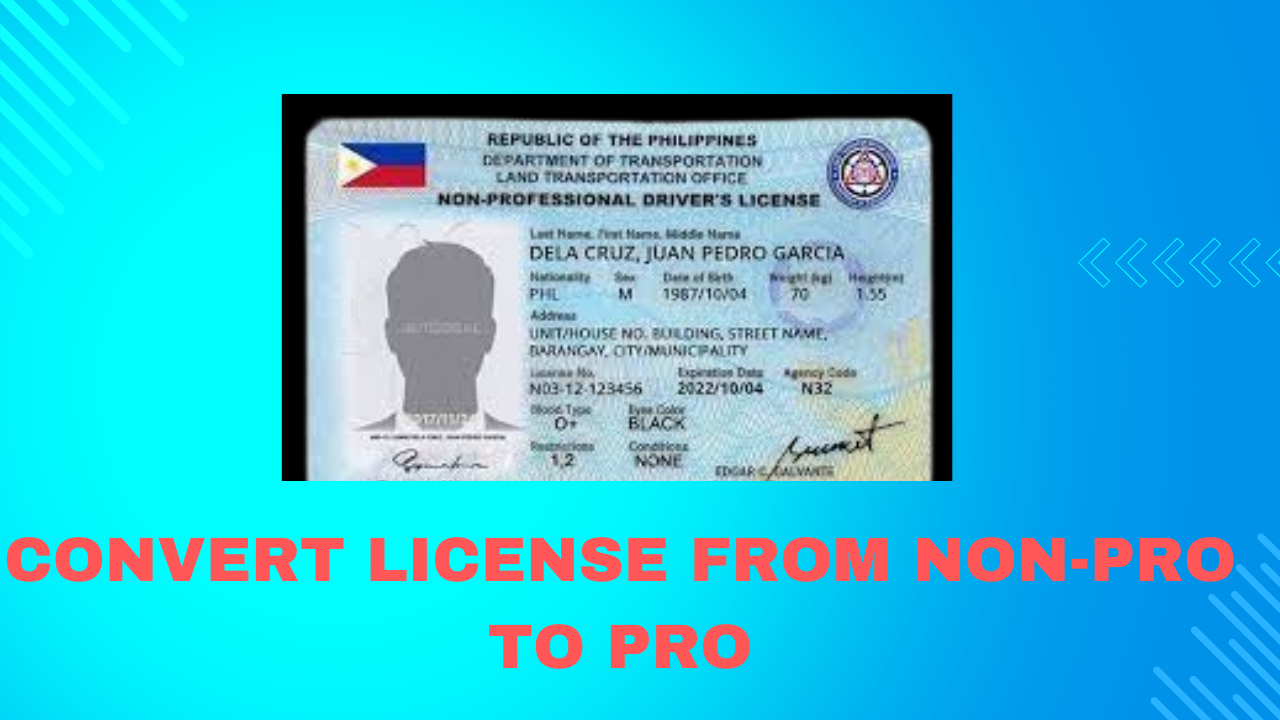
Before diving into the conversion process, it’s essential to understand the distinction between these two types of licenses:
- Non-Professional Driver’s License: This license is intended for individuals who drive vehicles for personal use. It allows you to operate vehicles like cars and motorcycles but does not permit you to drive for hire or for business purposes.
- Professional Driver’s License: This license is required for individuals who drive vehicles for commercial purposes, including public utility vehicles (PUVs) like jeepneys, buses, and taxis. It also includes the right to drive vehicles that a Non-Professional License holder is allowed to drive.
General Qualifications
Converting a How to Convert Non-Pro to Pro LTO Driver’s License in the Philippines involves meeting specific qualifications to ensure that applicants are fit for professional driving roles. Here’s a comprehensive overview of the general qualifications required for this conversion:
1. Age Requirement
- Minimum Age: Applicants must be at least 21 years old. This age requirement ensures that the driver is mature enough to handle the responsibilities associated with commercial driving.
2. Driving Experience
- Minimum Experience: Applicants must have held a Non-Professional Driver’s License for at least one year. This requirement is in place to ensure that the driver has sufficient experience and familiarity with driving regulations and road conditions.
3. Medical Fitness
- Medical Examination: A medical certificate from a licensed physician is required to confirm that the applicant is physically and mentally fit to drive. The medical examination includes:
- Vision Test: To ensure the applicant has adequate vision for safe driving.
- General Health Assessment: To confirm overall physical and mental health is suitable for driving responsibilities.
4. Clean Driving Record
- Traffic Violations: Applicants should have a clean driving record with no significant traffic violations. A history of serious traffic offenses may disqualify an applicant from obtaining a Professional Driver’s License.
5. Legal Requirements
- Citizenship: Applicants must be Filipino citizens or foreign nationals with valid residency status in the Philippines.
- Valid Non-Professional License: The existing Non-Professional Driver’s License must be valid and not expired.
6. Compliance with LTO Regulations
- Submission of Documents: Applicants must submit all required documents, including proof of identity, proof of address, and any other documentation required by the Land Transportation Office (LTO).
- Completion of Requirements: This includes passing the written examination on traffic rules and regulations, as well as the practical driving test.
7. Additional Requirements for Certain Vehicles
- Specific Licensing for Public Utility Vehicles (PUVs): If applying to drive specific types of PUVs (e.g., buses, taxis), additional requirements or endorsements might be necessary. This can include attending seminars or additional training related to commercial driving.
Eligibility Requirements to Convert Non-Pro to Pro LTO Driver’s License
Converting a Non-Professional Driver’s License to a Professional Driver’s License in the Philippines involves meeting several specific eligibility requirements. These requirements are designed to ensure that applicants are well-prepared and qualified for professional driving responsibilities. Below is a detailed list of the eligibility requirements:
- Minimum Age: Applicants must be at least 21 years old. This age limit is set to ensure that individuals are mature and responsible enough to handle the complexities of commercial driving.
- Valid Non-Professional Driver’s License: Applicants must currently hold a valid Non-Professional Driver’s License. The license must be active and not expired at the time of application.
- Minimum Experience: Applicants must have held their Non-Professional Driver’s License for at least one year. This requirement ensures that the applicant has enough driving experience and is familiar with road rules and traffic regulations.
- Medical Certificate: Applicants are required to obtain a medical certificate from a licensed physician. This certificate should confirm that the applicant is physically and mentally fit to drive. The medical examination typically includes:
- Vision Test: To ensure that the applicant has adequate vision for safe driving.
- General Health Check-Up: To assess overall health and identify any medical conditions that may affect driving ability.
- No Significant Traffic Violations: Applicants should have a clean driving record with no major traffic violations or offenses. A history of serious traffic violations can disqualify an applicant from being issued a Professional Driver’s License.
- Submission of Required Documents: Applicants must submit all necessary documents as specified by the Land Transportation Office (LTO). These documents typically include:
- Proof of Identity: Such as a birth certificate or other government-issued ID.
- Proof of Address: Utility bills or other documents verifying current residence.
- Non-Professional Driver’s License: The current valid license.
- Medical Certificate: Proof of fitness to drive.
- Passing the Written Exam: Applicants must pass a written examination that covers traffic rules, road safety, and regulations.
- Passing the Practical Driving Test: A practical driving test is required to assess the applicant’s driving skills and competence.
Eligibility Requirements for Foreigners Converting NPDL to PDL
1. Residency Status
- Valid Residency or Visa: Foreign applicants must have a valid residency permit or visa that allows them to stay in the Philippines. This ensures legal residency status and compliance with immigration regulations.
2. Age Requirement
- Minimum Age: The applicant must be at least 21 years old. This age requirement is consistent with the professional driving regulations in the Philippines.
3. Existing License
- Valid Non-Professional Driver’s License: The foreign applicant must possess a valid Non-Professional Driver’s License (NPDL). This license can be either from their home country or one issued by the LTO in the Philippines. The license must be current and not expired.
4. Driving Experience
- Minimum Experience: The applicant must have held the Non-Professional Driver’s License for at least one year. This ensures that the applicant has adequate driving experience and familiarity with road safety.
5. Medical Fitness
- Medical Certificate: A medical certificate from a licensed physician in the Philippines is required to confirm that the applicant is physically and mentally fit to drive. The medical examination should include:
- Vision Test: To ensure that the applicant meets the vision standards for driving.
- General Health Assessment: To confirm overall fitness for driving.
6. Proof of Identity and Legal Status
- Proof of Identity: Foreign applicants must provide valid proof of identity, such as a passport.
- Proof of Legal Status: Documentation showing legal status in the Philippines, such as a valid visa or residency permit.
- Proof of Address: Documentation verifying the applicant’s current address in the Philippines, such as a utility bill or lease agreement.
7. Clean Driving Record
- No Major Traffic Violations: The applicant should have a clean driving record with no significant traffic violations. A history of serious offenses can disqualify them from obtaining a Professional Driver’s License.
8. Compliance with LTO Regulations
- Submission of Documents: The applicant must submit all required documents to the Land Transportation Office (LTO), including:
- Valid Non-Professional Driver’s License: Both the original and a photocopy.
- Medical Certificate: Proof of fitness to drive.
- Proof of Identity and Address: Passport, visa, and proof of residence.
9. Written and Practical Examinations
- Passing the Written Exam: Foreign applicants must pass a written examination covering traffic laws, road safety, and regulations in the Philippines.
- Passing the Practical Driving Test: A practical driving test is required to assess the applicant’s driving skills and ability to operate a vehicle safely.
10. Additional Requirements for Specific Vehicles
- Endorsements for Public Utility Vehicles (PUVs): If the foreign applicant intends to drive public utility vehicles (e.g., buses, taxis), additional qualifications or endorsements may be required. This can include:
- Specialized Training: Additional training or seminars related to the operation of commercial vehicles.
- Vehicle-Specific Endorsements: Obtaining endorsements specific to the type of vehicle the applicant wishes to drive.
Other cases
- Must present Clearances/Certificate (Any of the following)
- NBI Clearance
- Police Clearance
- Court Clearance
- Certificate from Commanding Officer, if a military officer
- Negative Drug Test result (from an LTO-accredited drug testing facility in the Philippines)
For those who wish to Add DL Codes
Those holders with Condition Codes 2, 3, 4, or 5 are not allowed to operate For Hire/Public Utility Vehicles or commercial vehicles. Unless license holders can present proof that they are allowed to do so, issued by a qualified LTO-accredited medical specialist from an LTO-accredited clinic in the Philippine.
For those who wish to Add DL Codes
-
-
- Must clear written exam and practical driving exam, along with fees for additional DL code.
-
Processing Time
The processing time for converting a non-professional to a professional license via the LTMS Portal typically ranges from two hours and ten minutes to four hours and twenty-five minutes, depending on the complexity of the transaction, speed of server and the number of additional procedures to be done. Applicants can also track the status of their application online through the LTMS Portal at any place and anytime.
Procedures to Convert Non-Pro to Pro LTO Driver’s License
To change your driver’s license classification from Non-Professional to Professional in the Philippines through an online procedure, you would primarily use the LTO’s online services and appointment system. Here’s a step-by-step guide:
1. Check Eligibility
Ensure you meet all the requirements for upgrading to a Professional Driver’s License:
- At least 21 years old.
- Held a Non-Professional Driver’s License for at least one year.
- Meet the medical and physical requirements.
2. Online Appointment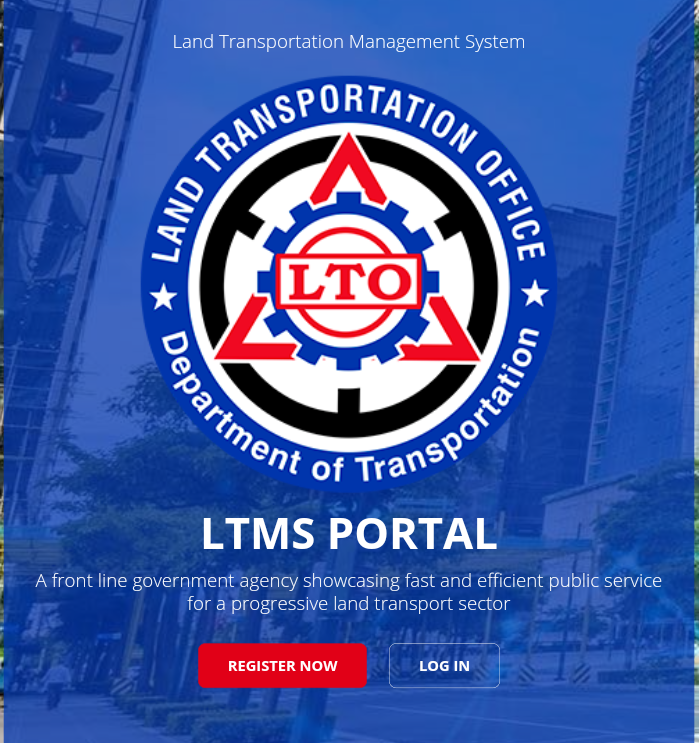
Schedule an appointment through the LTO’s online appointment system.
- Visit the LTO Online Appointment Portal: LTO Online Appointment
- Register/Login: Create an account or log in if you already have one.
- Schedule Appointment: Choose the type of transaction (license upgrade) and select your preferred LTO branch and date.
3. Gather Required Documents
Prepare the necessary documents before your appointment:
- Current Non-Professional Driver’s License.
- Original and photocopy of your Birth Certificate or other valid ID.
- Medical Certificate from a DOH-accredited clinic.
- Certificate of Completion of Theoretical Driving Course (if required).
- Additional documents may be required by your local LTO office.
4. Complete Theoretical Driving Course
If not previously completed, take the Theoretical Driving Course from an LTO-accredited driving school. Some of these courses might be available online or require physical attendance.
- Find accredited driving schools: LTO Accredited Driving Schools
5. Visit the LTO Office
On the day of your appointment, go to the LTO office you selected:
- Submit Documents: Hand over your documents to LTO personnel.
- Pay Fees: Pay the applicable fees for upgrading your license.
- Take Examinations: Depending on LTO requirements, you may need to take a written and/or practical driving test.
6. Biometrics and Photo
- Have your biometrics and photo taken for your new Professional Driver’s License.
7. Receive Your Professional Driver’s License
- Once all requirements are met and processed, you will receive your new Professional Driver’s License
8.Philippine News and Updates
- Keep up with the latest news and updates related to LTO and driver’s license regulations through local news websites like ABS-CBN News or GMA News.
Additional Online Resources
- LTO’s Website: For official information and updates – LTO Official Website
- LTO Mobile App: Available on Google Play Store and Apple App Store.
Health Protocols: Adhere to any health and safety protocols as set by the LTO due to ongoing health concerns.
Benefits of Changing from Non-Pro to Pro License Online
Changing from a Non-Professional Driver’s License (NPDL) to a Professional Driver’s License (PDL) in the Philippines through an online process offers several benefits. Here’s a breakdown of the advantages:
1. Convenience
- Reduced Time Spent in Queues: Scheduling your appointment online helps avoid long lines at LTO offices, making the process more efficient.
- Manage Your Schedule: You can choose a convenient time and date for your appointment, reducing the need for time-consuming visits.
2. Streamlined Process
- Efficient Handling: Online appointment systems help streamline the processing of your application, ensuring that your paperwork and requests are handled in an organized manner.
- Pre-Processing: Some parts of the application, like document submission or payment, can be initiated online, expediting the in-office process.
3. Improved Accessibility
- Accessibility to Information: Online resources and portals provide comprehensive information on the requirements, fees, and procedures, helping you prepare better for your appointment.
- Location Flexibility: You can book an appointment at a branch that is most convenient for you, even if it’s not the nearest one.
4. Reduced Physical Visits
- Minimized Trips: By handling as much of the process online as possible, you reduce the number of trips you need to make to the LTO office.
- Contactless Transactions: Some services and payments can be handled online, reducing the need for physical interaction and paperwork.
5. Efficient Documentation
- Pre-Filled Forms: Online systems often allow you to pre-fill and submit forms, reducing errors and ensuring that you have all required information ready before your visit.
- Document Upload: Some online systems allow you to upload necessary documents in advance, speeding up the in-office processing.
6. Enhanced Record Keeping
- Digital Records: Online systems often maintain digital records of your transactions, which can be useful for tracking your application status and ensuring that all steps have been completed.
7. Better Customer Service
- Appointment Reminders: Online systems often provide reminders for your appointment, reducing the chance of missing it.
- Support Resources: Access to online help and FAQs can provide guidance and support throughout the process.
8. Safety and Health Considerations
- Reduced Exposure: Online processes help reduce the need for physical visits, which can be beneficial during health crises or pandemics by minimizing exposure to crowded public spaces.
Fees
Here is a table summarizing the estimated fees associated with converting a driver’s license classification from Non-Professional to Professional in the Philippines for the year 2024:
| Valid NPDL to PDL Fees | Estimated Cost | Description |
| Application Fee | PHP 100.00 | Fee for processing the application for a Professional Driver’s License. |
| Replacement Fee | PHP 225.00 | Cost for replacement the Non Professional Driver’s License |
| Change Classification | PHP 100 | Fee for changing classifications |
| Total Fee | PHP 425.00 | Cost for obtaining valid NDL To PDL |
| For expired NPDL to PDL Fees | Estimated Cost | Description |
| Application Fee | PHP 100.00 | Fee for processing the application for a Professional Driver’s License. |
| Renewal Fee | PHP 585.00 | Cost for renewal the Non Professional Driver’s License |
| Change Classification | PHP 100 | Fee for changing classifications |
| Total Fee | PHP 785.00 + penalty | Cost for obtaining expired NDL To PDL |
Additional Fees
- If due for renewal, license fee = P 585.00
- Computation of penalty:
- If expired 1 day to 1 year = P 75.00
- 1 year and 1 day to 2 years = P 150.00
- 2 years and 1 day to 10 years = P 225.00
- For additional Restriction Code (ARC) = P 100.00
Notes
- Fees may vary depending on the specific LTO office and additional administrative costs.
- Check with LTO: For the most accurate and up-to-date information, contact your nearest LTO office or visit the LTO Official Website.
Where to Change to DL Classification from NPDL to PDL
To change your driver’s license classification from Non-Professional Driver’s License (NPDL) to Professional Driver’s License (PDL) in the Philippines, you need to visit a Land Transportation Office (LTO) branch. Here’s where and how you can do this:
Steps to Change Driver’s License Classification
1.Identify the Nearest LTO Office:
- LTO Licensing Centers: These offices handle driver’s license applications and renewals, including classification changes.
- LTO District Offices: Larger offices that often provide a wider range of services, including the upgrade of driver’s licenses.
2.Online Appointment System:
- Schedule an Appointment: Use the LTO Online Appointment System to book a slot. This helps manage the number of applicants and minimizes waiting times.
- LTO Online Appointment Portal: LTO Online Appointment
3.Visit the LTO Office:
- Office Locations: Find the nearest LTO Licensing Center or District Office. You can use the LTO’s official website to locate the nearest branch.
- LTO Office Locator: LTO Office Locator
4.Required Documents:
- Current Non-Professional Driver’s License.
- Original and Photocopy of Birth Certificate or other valid ID.
- Medical Certificate from a DOH-accredited clinic.
- Certificate of Completion of Theoretical Driving Course (if required).
- Additional documents as required by your local LTO office.
Additional Notes
- Appointment: Scheduling an appointment online is highly recommended to avoid long waiting times.
- Office Hours: Check the office hours of the LTO branch you plan to visit to ensure it’s open on the day of your appointment.
Video: Changing from Non-Professional to Professional Driver’s License
https://youtu.be/IgCyDU1_g18
By visiting the nearest LTO Licensing Center or District Office and following the steps outlined, you can efficiently manage the process of changing your driver’s license classification from Non-Professional to Professional.
Tips
- Prepare Thoroughly: Ensure you are well-prepared for both the written and practical driving tests. Study the latest traffic rules and practice your driving skills.
- Check for Updates: Rules and requirements can change, so check the LTO website or contact your local LTO office for the most current information.
- Keep Records: Maintain copies of all documents submitted and keep track of your application status. This can help resolve any issues that may arise during the process.
- Be Patient: The conversion process can take time, especially if there are many applicants. Be patient and follow up if necessary to ensure your application is processed in a timely manner.
Conclusion
Converting your Non-Professional Driver’s License to a Professional Driver’s License in the Philippines involves a series of steps designed to ensure you are qualified and capable of handling commercial driving responsibilities. By meeting the eligibility requirements, preparing thoroughly, and following the outlined procedures, you can successfully make the transition and gain the qualifications needed to operate vehicles for hire or commercial purposes.
Always stay informed about any changes in the requirements or procedures by checking with the LTO and preparing adequately for the examinations and practical tests. With the right preparation and understanding, you can navigate the conversion process smoothly and efficiently.
You may like
Uncategorized
Can I drive automatic with a manual license in the Philippines?
Published
15 hours agoon
November 20, 2024By
AdminIn the Philippines, the Land Transportation Office (LTO) regulates the issuance of driver’s licenses, including the rules that govern which types of vehicles a licensed driver is allowed to operate. A common question among new drivers is whether they can drive an automatic vehicle if they hold a manual driver’s license.
To answer this question, it’s important to understand the difference between manual and automatic licenses and the restrictions associated with each. Yes, in the Philippines, if you have a manual transmission (MT) license, you can drive an automatic transmission vehicle. Here’s how it works on Can I drive automatic with a manual license in the Philippines?
Understanding Manual and Automatic Driver’s Licenses
When you apply for a driver’s license in the Philippines, you must pass a driving test that involves demonstrating your ability to operate a vehicle. The LTO issues driver’s licenses based on the type of vehicle used during the test. The two main categories are:
- Manual Transmission License (Code 2): This is issued to individuals who pass their driving test using a manual transmission vehicle. A manual vehicle requires the driver to manually shift gears using a clutch and gearstick. Drivers with this license are generally proficient in operating manual cars and can drive both manual and automatic transmission vehicles.
- Automatic Transmission License (Code 3): This is given to drivers who pass their driving test using an automatic transmission vehicle. Automatic vehicles do not require the driver to manually shift gears, making them easier to drive. However, drivers with this restriction are limited to driving only automatic vehicles and are not authorized to operate manual transmission vehicles.
1. Manual Transmission (MT) License
- If you pass your driving test in a manual transmission vehicle, the LTO (Land Transportation Office) will issue you a driver’s license that permits you to drive both manual and automatic transmission vehicles.
- Restriction Code 2 (for light vehicles) or Restriction Code 3 (for heavy vehicles) on your license indicates that you are authorized to drive both manual and automatic transmission vehicles in the relevant vehicle class.
2. Automatic Transmission License
However, if you pass the driving test using an automatic transmission vehicle, your license may be restricted to only automatic vehicles. This means you won’t be legally allowed to drive a manual transmission vehicle.
Summary
- If you have a manual (MT) license, you can drive both manual and automatic transmission vehicles.
- If you have an automatic-only license, you can only drive automatic transmission vehicles. To drive a manual vehicle, you would need to take a practical driving test in a manual car to upgrade your license.
Understanding the Driver’s License System in the Philippines
In the Philippines, the LTO issues two types of licenses for private individuals:
- Non-professional driver’s license (for personal use, driving private vehicles).
- Professional driver’s license (for commercial use, such as public utility vehicles, delivery trucks, etc.).
Both of these licenses can be issued with different restriction codes, which specify the type of vehicle a driver is authorized to operate. For example:
- Restriction Code 1: Motorcycles (with or without sidecars).
- Restriction Code 2: Light vehicles such as cars, SUVs, and light trucks.
- Restriction Code 3: Heavy vehicles such as buses, large trucks, and other commercial vehicles.
Manual vs. Automatic Transmission Vehicles
The distinction between manual transmission and automatic transmission vehicles is crucial in this context:
- Manual Transmission (MT): Requires the driver to manually shift gears using a clutch and gear stick. This gives the driver more control over the vehicle, which some prefer for performance, fuel efficiency, or driving conditions.
- Automatic Transmission (AT): Automatically shifts the gears based on the vehicle’s speed and load. Automatic vehicles are generally considered easier to drive, especially for beginners, as the driver does not have to worry about manually changing gears.
What Does a Manual Driver’s License Allow?
If you pass your practical driving test in a manual transmission vehicle, you are issued a driver’s license that allows you to drive both manual and automatic transmission vehicles. This is because the driving test is conducted with the assumption that a person who can handle a manual vehicle will also be capable of operating an automatic one, which is considered simpler.
The restriction code that is typically issued for light vehicles is Restriction Code 2, which permits you to drive cars, light trucks, and other light motor vehicles. This license would allow you to legally operate both manual and automatic cars, regardless of the transmission type.
So, in the case of a manual driver’s license, whether it’s a Non-Professional or Professional License, the person is authorized to drive both manual and automatic transmission vehicles. This is true because manual transmission requires more skill and control over the vehicle, and if a person is proficient in driving a manual car, they can easily transition to an automatic.
Can You Drive an Automatic Vehicle with a Manual License?
Yes, you can. If you hold a manual driver’s license, you are legally permitted to drive both manual and automatic transmission vehicles. This is because the manual license allows you to drive vehicles with both transmission types, and the automatic transmission is simply easier to operate. Since you are already trained and tested to drive a manual car, you are assumed to have the skills necessary to drive an automatic car as well.
However, there is a distinction when you get a driver’s license based on an automatic transmission test, which we will explore next.
What Does an Automatic-Only License Mean?
If you took your practical driving test using an automatic transmission vehicle, your driver’s license may be restricted to automatic transmission vehicles only. In this case, your restriction code will still indicate that you can drive a light vehicle (restriction code 2) or heavy vehicle (restriction code 3), but it may also be understood that your license only allows you to drive automatic cars. This is because you were only tested and assessed for proficiency in driving an automatic vehicle, which does not require gear-shifting skills.
Can You Drive Manual Vehicles with an Automatic-Only License?
If you were issued a driver’s license based on a practical driving test in an automatic vehicle, no, you cannot legally drive a manual transmission vehicle. In this case, you are restricted to driving only automatic transmission vehicles. The LTO does not automatically permit you to drive manual vehicles unless you have passed a driving test using a manual car.
If you are issued an automatic-only license, it is important to note that this restriction only applies to driving manual transmission vehicles. You are still authorized to operate automatic transmission vehicles, but you cannot legally operate manual cars.
How to Upgrade From an Automatic-Only License to a Full License
If you have a driver’s license with a restriction for automatic transmission only and you wish to be able to drive manual vehicles, you will need to undergo the following steps:
- Take the Practical Driving Test Again in a Manual Car: You will need to reapply for a driving test, but this time, you must take the test using a manual transmission vehicle. The LTO requires that you demonstrate proficiency in driving a manual car before they remove the restriction on your license.
- Pass the Test and Request License Upgrade: Once you pass the driving test with a manual vehicle, you can request an upgrade to your driver’s license at the LTO. After successfully passing the test, you will be issued a new license without the automatic-only restriction, allowing you to legally drive both manual and automatic transmission vehicles.
Key Differences Between Manual and Automatic Licenses in the Philippines
- Manual Driver’s License: If you pass the driving test in a manual vehicle, you can drive both manual and automatic cars. This is the more flexible option, as it allows you to operate a wider range of vehicles.
- Automatic-Only License: If you pass the driving test in an automatic vehicle, you can only drive automatic transmission vehicles. To drive a manual car, you will need to take a new test in a manual vehicle to have your restriction lifted.
Why Does the LTO Have Different Rules for Manual and Automatic Licenses?
The LTO’s policy is designed to ensure that drivers are fully competent in handling the vehicles they are licensed to drive. Driving a manual transmission vehicle requires more coordination and skill (e.g., shifting gears while controlling the clutch), whereas driving an automatic transmission vehicle is simpler, as it doesn’t require manual gear shifting.
The reasoning behind allowing manual license holders to drive both manual and automatic cars is that a person who has mastered manual driving will also be able to handle automatic transmission without difficulty. Conversely, someone with an automatic-only license has not demonstrated proficiency in manual transmission, hence the restriction.
Practical Considerations and Legal Compliance
- Insurance: It’s important to note that in case of an accident, if you are caught driving a vehicle outside the scope of your license (for example, if you drive a manual car with an automatic-only license), you could face legal consequences, and your insurance policy might not cover the damages.
- Driving Test Requirements: In the Philippines, many people initially take their driving test in an automatic transmission vehicle because it’s easier for beginners. However, if you plan on driving manual transmission vehicles, it’s advisable to take the practical driving test in a manual car, so you are legally allowed to drive both types.
FAQS
1. Can I drive an automatic vehicle with a manual driver’s license in the Philippines?
- Yes, if you hold a manual driver’s license (Code 2), you can drive both manual and automatic vehicles. A manual license indicates that you have demonstrated proficiency in driving a manual car, and therefore, you are allowed to drive both types of vehicles.
2. What is the difference between a manual and automatic driver’s license in the Philippines?
- A manual driver’s license (Code 2) is issued when a driver passes the test using a manual transmission vehicle. Drivers with this license can operate both manual and automatic vehicles.
- An automatic driver’s license (Code 3) is issued when a driver passes the test using an automatic transmission vehicle. This restricts the driver to only driving automatic vehicles and not manual ones.
3. Can I drive a manual vehicle with an automatic driver’s license (Code 3)?
- No, if you have an automatic driver’s license (Code 3), you are legally restricted to driving only automatic vehicles. You are not authorized to operate manual vehicles unless you retake the driving test with a manual transmission vehicle to remove the restriction.
4. Why do I need a manual license to drive both manual and automatic vehicles?
- A manual license (Code 2) is given to drivers who have demonstrated the ability to handle a manual transmission vehicle, which requires more skill (like shifting gears manually). Therefore, those with a manual license are considered competent to drive both types of vehicles, whereas those with an automatic-only license are limited to automatic cars.
5. Can I switch my automatic license (Code 3) to a manual license (Code 2)?
- Yes, you can convert your automatic license (Code 3) to a manual license (Code 2). You need to retake the driving test using a manual transmission vehicle. Once you pass, you can apply to have the restriction removed, allowing you to drive both manual and automatic vehicles.
6. If I have a manual driver’s license, can I drive an automatic car?
- Yes, if you have a manual driver’s license (Code 2), you are permitted to drive both manual and automatic transmission vehicles without any restrictions.
7. Can I rent an automatic car with a manual license?
- Yes, if you have a manual license (Code 2), you can rent and drive both manual and automatic cars. The restriction only applies to drivers with a Code 3 license, which limits them to automatic vehicles.
8. What happens if I drive a manual car with a Code 3 license?
- If you have a Code 3 license and drive a manual car, it is considered illegal because you are not authorized to operate manual vehicles. To do so, you would need to pass a driving test in a manual transmission car to lift the restriction.
9. Is there any way to change my license restriction without retaking the driving test?
- Unfortunately, to remove a Code 3 restriction (automatic license) and drive manual vehicles, you will need to retake the driving test using a manual vehicle. There is no alternative method to change the restriction without passing the manual test.
10. Are the restrictions the same for professional and non-professional licenses?
- Yes, the restrictions for manual and automatic vehicles apply to both professional and non-professional licenses. If you pass the driving test using a manual vehicle, you are allowed to drive both types of cars regardless of whether your license is professional or non-professional. The main difference is that professional licenses are for commercial vehicle use.
11. Are there additional fees to lift the restriction from my automatic license?
- Yes, there may be additional fees for taking the driving test again or for processing the change in your license. These fees can vary depending on the LTO branch or the type of service.
12. What is the process to convert my license from automatic to manual?
- To convert your license from automatic-only (Code 3) to manual (Code 2), you need to:
- Take a driving test using a manual transmission vehicle.
- Pass the test.
- Apply to have the restriction removed at the LTO branch.
- Pay any applicable fees for the license change.
13. Can I drive both automatic and manual vehicles without any restrictions if I take the manual test?
- Yes, if you take and pass the driving test using a manual vehicle, you will not have any restrictions on your license. This means you can legally drive both manual and automatic transmission vehicles.
Conclusion
In summary, yes, you can drive an automatic transmission vehicle with a manual driver’s license in the Philippines. This is because the manual license gives you the ability to drive both manual and automatic vehicles. However, if you hold an automatic-only license, you are restricted to driving automatic vehicles only. To drive manual cars legally with an automatic-only license, you would need to take a driving test in a manual transmission vehicle and request an upgrade from the LTO.
Trending
-
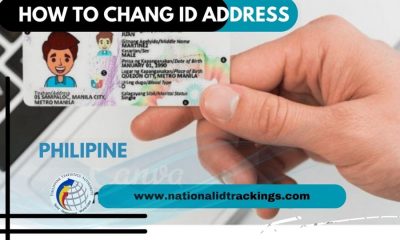
 Uncategorized6 months ago
Uncategorized6 months agoHow to change National ID Address
-
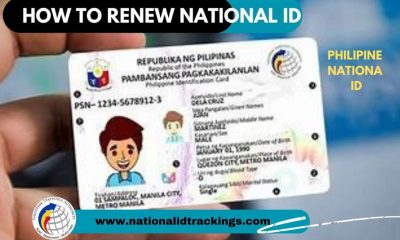
 Uncategorized6 months ago
Uncategorized6 months agoNational ID Renewal in Philippines Easy Process
-
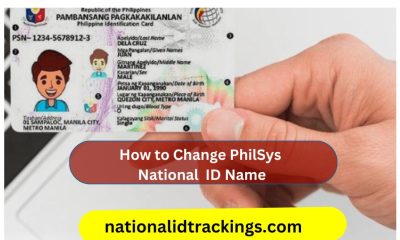
 Uncategorized6 months ago
Uncategorized6 months agoNational ID Name Change – National ID Card Name Change
-
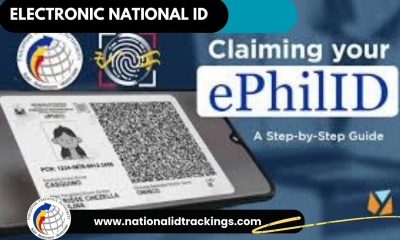
 Uncategorized6 months ago
Uncategorized6 months agoPhilSys ID Check – Electronic Phillipine Identification
-
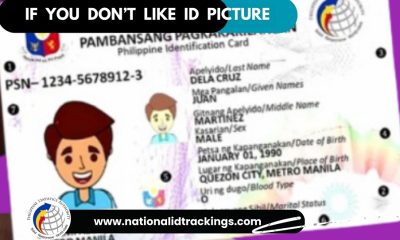
 Uncategorized6 months ago
Uncategorized6 months agoDon’t like Picture on PhilSys National ID ?
-
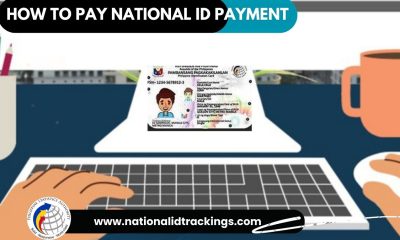
 Uncategorized6 months ago
Uncategorized6 months agoNational ID Payment – National ID Payment Philsys
-
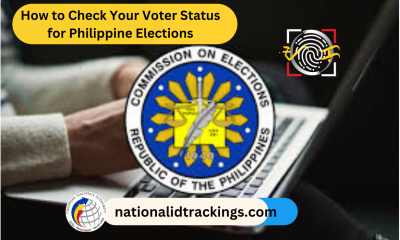
 Uncategorized5 months ago
Uncategorized5 months agoHow to Check Your Voter Status for Philippine Elections
-
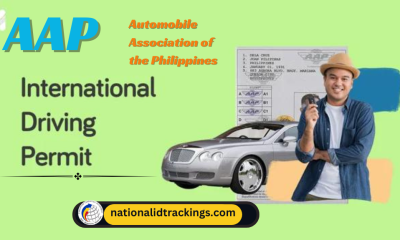
 Uncategorized5 months ago
Uncategorized5 months agoPhilippine International Driving Permit (PIDP)
-
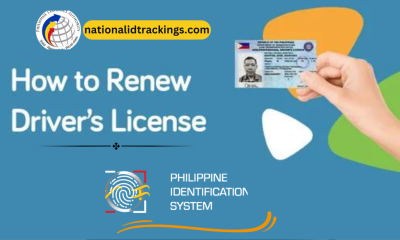
 Uncategorized5 months ago
Uncategorized5 months agoRenewal of Driver’s license in the Philippines
-

 Uncategorized3 months ago
Uncategorized3 months agoCan I Print My Digital National ID- A Detailed Guide
-
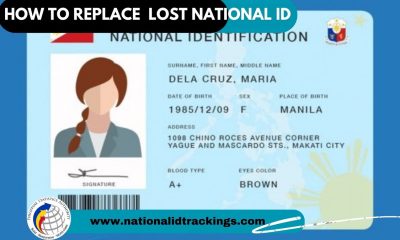
 Uncategorized6 months ago
Uncategorized6 months agoHow to Replace a Lost National ID Philippine
-

 Uncategorized6 months ago
Uncategorized6 months agoPhilSys National ID for Minors